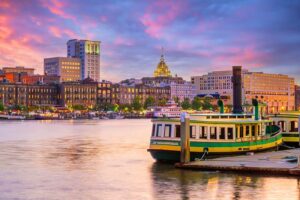
Active adult communities across the country are taking note of the importance of going green and investing in sustainable practices that are not only good for the environment and retirees’ bank accounts, but also for the properties. As more Boomers seek healthier and eco-friendly alternatives, the demand for green retirement communities continues to grow.
Builders Going Green
Although a majority of retirement communities implementing green building practices is somewhat rare, several are tackling the issue at hand in order to set the standard in green retirement communities. Well-known builders like Shea Homes, Lennar Homes, Taylor Morrison, Del Webb, and AV Homes are incorporating more green initiatives by reducing their carbon footprint and offering energy-efficient home designs within their active adult communities.
One perfect example is the 55+ community of Mirabella in Bradenton, FL, which received the LEED for Homes Platinum certification. This prestigious certification, which stands for Leadership in Energy and Environmental Design, makes Mirabella a prominent energy-efficient residential development in Florida where the availability of LEED Platinum certified homes are often scarce, especially in a community on such a large scale.
Energy Efficient Systems
With green initiatives becoming a priority in more active adult communities, builders are adding energy-efficient systems into their home designs as well as throughout the entire community. Shea Homes is one of the top energy-efficient active adult developers in the country and has racked up a long list of accolades including “2015 Best 55+ Community of the Year,” “Best Eco-Friendly Designs,” and “Best Floor Plans for 50+.”
One of their eco-friendly 55+ communities is Trilogy at Vistancia, which features Shea Green Certified home designs, which were built with eco-friendly construction materials and green building methods to leave a minimal impact on the environment. The homes were also developed to include the latest energy-saving technology like solar-ready panels and Aqua Pex water piping systems that help reduce energy costs.
Switching out old light bulbs with LED lights is just one of the many ways homeowners can transition to a greener lifestyle, but sometimes that’s not enough. That’s why builders like Del Webb also provide quality, low-maintenance homes with eco-friendly construction throughout.
Del Webb Orlando features homes that include vinyl dual pane energy-saving windows, digital programmable thermostats, R-30 ceiling insulation, Lennox air conditioners and heat pumps, and air filtration sealants applied on all exterior openings. And in Heritage El Dorado Hills in Northern California, Lennar offers standard green features in all of their home designs such as Energy Star appliances, LED lighting, automatic irrigation systems, and state-of-the-art SunStreet energy solar systems.
Green Materials
Using more green materials is also a must these days. Builders are using locally sourced materials or recycled products like reclaimed wood or repurposed fishing nets for their designs that are being used in more ways than one. Other communities offer vast networks of walking and biking trails, which encourage residents to walk or bike when running errands.
Water Conservation
In states like California where water conservation is a top priority, retirement communities are implementing water practices like using native plants that need less water, low-flow toilets, and tankless water heaters. Builders are also offering a new generation of eco-friendly irrigation systems for communities to keep their landscaping looking lush without wasting too much water. Programmable sprinkler systems help these eco-conscious communities save on water, especially when homeowners check the forecast so they know when to turn off the sprinklers if it rains. Some communities are also installing bioswales on properties, which removes silt and pollution from surface runoff water.
Saving Money
Even though developing green retirement communities is more costly because of the materials being used, active adults will be able to save more money long term due to reduced energy costs. Not only will retirees save money on utility bills, which is great for their budget, but they will also do their part in reducing their carbon footprint and making the planet a more sustainable place to live.











